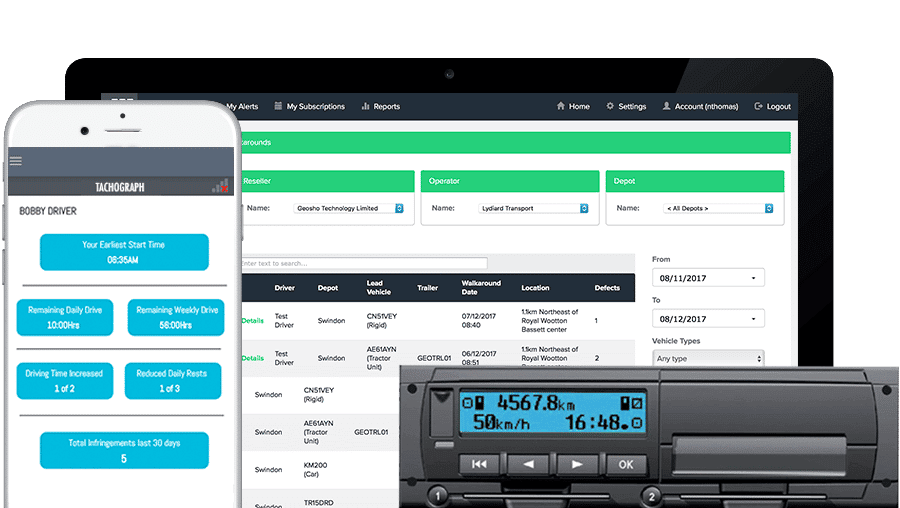How to Use a Tachograph: A Comprehensive Guide
Introduction:
Tachographs are essential tools for monitoring driving hours and rest periods in commercial vehicles, ensuring road safety, and promoting compliance with driving regulations. Whether you’re a professional driver or a fleet manager, understanding how to use a tachograph correctly is crucial. In this guide, we’ll walk you through the basics of using a tachograph, referencing valuable information from the official UK government website.
What is a Tachograph?
A tachograph is a device installed in most commercial vehicles to record driving time, rest periods, and other work-related activities. It helps enforce regulations, such as the EU and UK drivers’ hours rules, which are designed to prevent fatigue-related accidents and maintain the well-being of drivers on the road.
Using a Digital Tachograph:
1. Familiarize Yourself with the Dashboard:
Digital tachographs have user-friendly interfaces with a digital display and a few control buttons. Take a moment to understand the symbols and functions displayed on the screen.
2. Driver Card Insertion:
Before starting your journey, insert your personal driver card into the tachograph. The Driver Card contains your digital driver information and history, it must be inserted at the start of each duty or when changing vehicles (if you are driving multiple vehicles in one day).
3. Vehicle Unit Status:
Check the tachograph to ensure it is active and recording data correctly. The device should indicate your name or driver number, the date, and time.
4. Select Mode:
Digital tachographs have different modes: driving, rest, availability, and other work. Ensure you select the appropriate mode to reflect your current activity accurately.
5. Manual Entries:
Manual entries are used to indicate what you are doing between ejecting your card from the Digital Tachograph & re-insertion. It is UK law that for any other time when you are not using your Driver Card you must record what you are doing. This maybe a Rest Day, Holiday, Sickday or other duty, you can record this legally on a Analogue Chart, Digi Print-out roll or via Manual Entry.
A Manual Entry is the preferred option & is recorded on your card when you first insert it into the Tachograph. Different tachos have slightly different ways of recording this but in essence are all very similar.
6. Regular Calibration:
Digital tachographs require periodic calibration. Ensure the device’s accuracy by having it calibrated at approved centers according to the specified intervals.
Using an Analogue Tachograph:
1. Recording Charts:
An analogue tachograph uses a rotating paper chart to record driving and rest periods. Familiarize yourself with the chart and understand how it works.
2. Chart Insertion:
Insert a fresh recording chart into the tachograph at the start of each journey. The chart must be positioned correctly to ensure accurate recordings.
3. Manual Entries:
Just like with digital tachographs, you may need to make manual entries on the analogue chart.
4. Keeping Records:
After your journey, ensure that you keep the recording charts safely and securely for the required period (usually 28 days). These charts serve as crucial evidence of your driving activities if needed for inspections.
Conclusion:
Using a tachograph correctly is not only a legal requirement but also crucial for maintaining road safety and preventing fatigue-related accidents. Whether you are using a digital or analogue tachograph, understanding its functions, making accurate entries, and staying compliant with the regulations are essential aspects of responsible driving. Always refer to the official UK government website, for the most up-to-date and accurate information on tachograph usage and regulations. By doing so, you contribute to safer roads and a more efficient transport industry.

